Finding the right fit for your figure skates is crucial. It affects both your comfort and performance on the ice. Unlike other sports footwear, figure skates have unique fitting requirements.
These requirements ensure the skater’s safety and enhance their ability to perform jumps, spins, and footwork with precision. Let’s learn, how should figure skates fit?
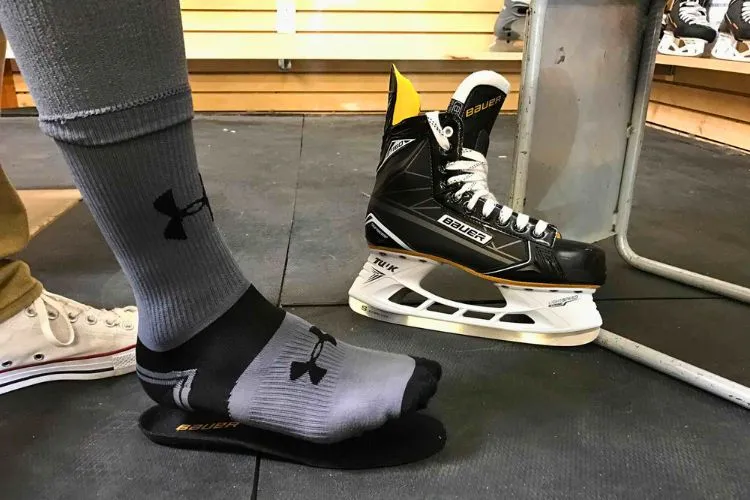
Understanding Figure Skate Sizing
Figure skate sizes do not always match regular shoe sizes. This can be confusing at first. Different manufacturers might also have varying size charts.
Checking these charts is vital before making a purchase. It helps you find the right fit based on your foot measurements.
Key Considerations for Skate Fit
Length and Size
Proper length in a figure skate ensures your toes have slight room to move. They should not press against the front of the boot. At the same time, your heel should sit firmly in place without sliding.
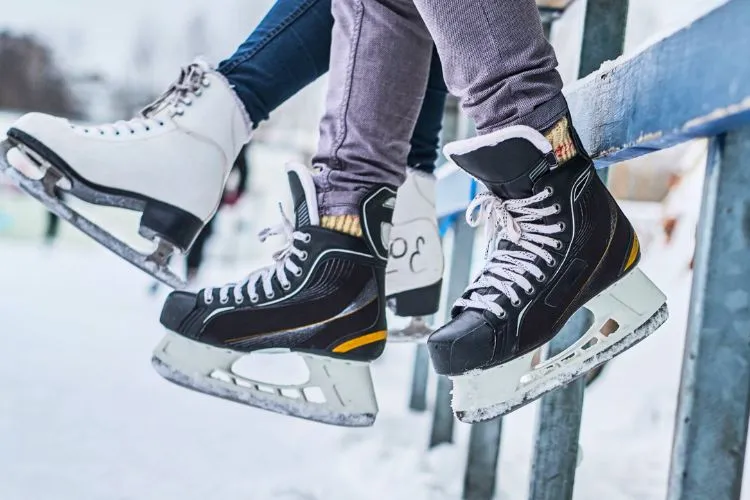
Skate Width
The width of your skates is equally important. Skaters with wider feet need skates that accommodate this without causing pressure points. On the other hand, too wide skates can lead to lack of control.
Ankle Support
Ankle support is crucial in figure skating. It helps prevent injuries and provides stability for jumps and spins. The boot should fit snugly around the ankle. However, it should not cut into the skin or cause discomfort.
How Should Figure Skates Fit?
Measuring Your Feet
Start by measuring your feet. Use a Brannock device or a similar tool for accurate length and width measurements. Do this in the afternoon or evening as feet can swell slightly during the day.
Trying on Figure Skates
When trying on skates, wear thin socks or tights. These simulate what you’ll wear on the ice. The skate should feel snug but not painfully tight. Pay attention to any areas that pinch or rub as these can lead to problems.
Signs of a Good Fit
A well-fitting skate will hold your foot securely. There should be no excessive movement inside the boot.
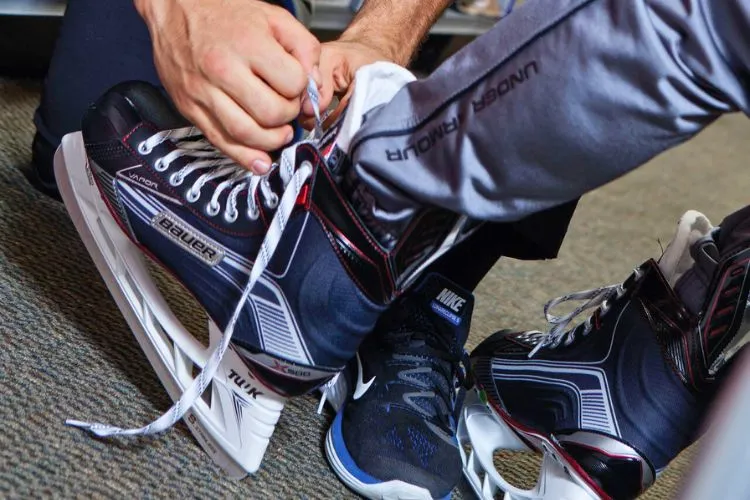
At the same time, your feet should not feel cramped or under pressure. Being comfortable from heel to toe is the sign of a good fit.
Common Issues and Solutions
- Sizing Problems: If skates are too tight or too loose, adjustments may be needed. Different lacing techniques can help. For serious fit issues, consult a professional fitter.
- Break-in Period: New skates often need a break-in period. During this time, wear them at home to get used to the feel. If discomfort persists, professional adjustments might be necessary.
- Skate Adjustments: For minor fit problems, insole inserts can offer relief. Heat molding is another option. It customizes the boot’s shape to your foot.
Maintenance for Optimal Fit
Maintaining your figure skates is vital for preserving their fit and performance. As time passes, the materials of the skate can stretch and compress, causing a once perfect fit to become looser.
This can lead to reduced support and can influence your control and precision on the ice. Regularly check for any signs of wear in the lining, the laces, or the outer material of the boot.
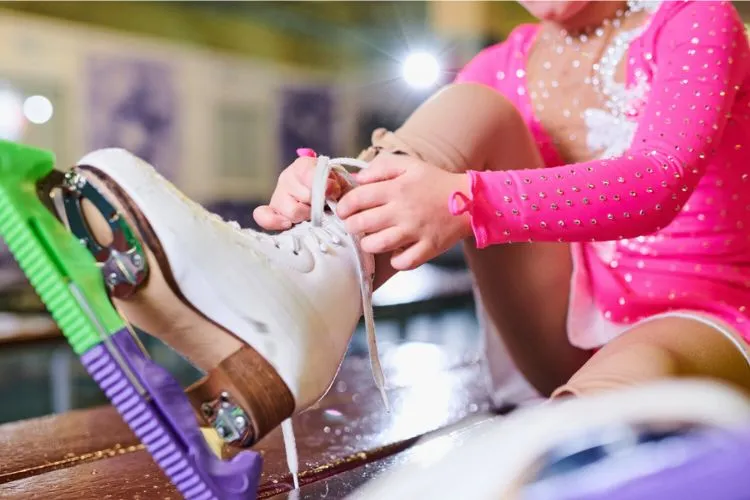
Inspect the soles and heels for any detachment or degradation that could affect the skate structure.
When you notice significant wear that affects the fit, it may be time to replace specific parts, such as the insole or lacing, to restore tightness.
If these solutions do not suffice, it might be wise to invest in a new pair of skates to ensure your safety and the quality of your performance.
Understanding Skate Fit and Performance
The fit of a skate is paramount to a skater’s performance, directly impacting their balance, speed, and agility on the ice.
A precise fit ensures optimal energy transfer from the foot to the skate, allowing for more efficient movements and better control.
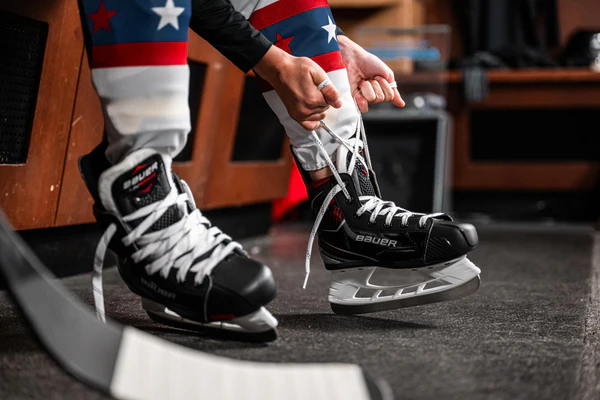
Too loose, and a skater may struggle with stability, risking injury from poor support. Too tight, and they could face discomfort or circulation issues, distracting from focus and technique.
Regular maintenance of the skate fit not only prolongs the life of the skates but preserves the skater’s ability to perform intricate maneuvers with confidence and precision, making a well-fitted skate an indispensable tool in achieving peak performance.
Signs of Wear and Tear
Signs of wear and tear on skates include stretched or frayed laces, softening of the boot material compromising ankle support, noticeable thinning or cuts in the boot exterior, and detachment or erosion of the sole and heel.
Additionally, dulled blades that resist sharpening and loose fittings can significantly hinder skating performance, leading to reduced control and stability on the ice.
Pro Tips
Consulting with a professional for fitting ensures the best outcome. High-quality socks designed for figure skating can make a significant difference in how skates fit.
Avoid buying skates with too much room for growth in children. This can negatively impact support and skating ability.
You may also read: Should Figure Skaters Lift Weights?
Frequently Asked Questions (FAQs)
Should figure skates be the same size as my regular shoes?
No. Figure skates often run smaller than regular shoes. Always check the specific brand’s size chart for the best fit.
How do I know if my figure skates are too small?
If your toes are cramped or your feet go numb, your skates might be too small. A proper fit allows for a slight wiggle room for your toes.
Can insoles or orthotics be used in figure skates?
Yes. Custom insoles or orthotics can be used to improve comfort and fit. They can also help with alignment and reduce strain on the feet.
How long does it typically take to break in new figure skates?
Break-in periods vary. Generally, it takes a few weeks of regular use. Wearing your skates at home can speed up the process.
Is it better for figure skates to be tighter or looser?
Skates should be snug but not overly tight. A fit that’s too loose can cause a lack of control, while one that’s too tight can result in discomfort and circulation problems.
Conclusion
Selecting the right figure skates is a careful process. It demands attention to sizing, fit, and comfort. Taking the time to get it right ensures a better, safer skating experience.
Mastering the fit of your figure skates is foundational to your success and enjoyment in the sport. Take the time to ensure a perfect match, and your skating will surely benefit.
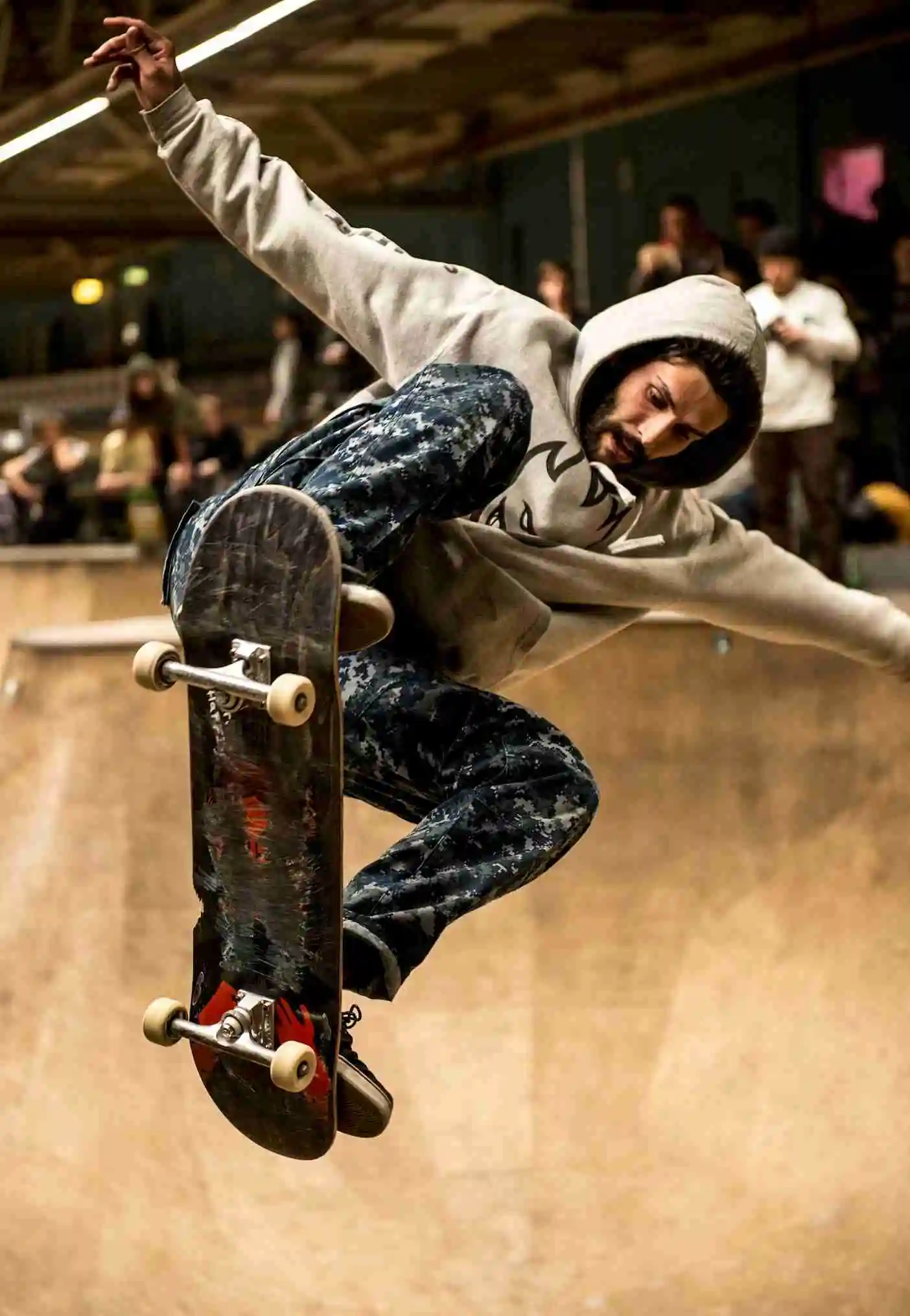
Matthew James is a passionate skater who wanted to create a platform to share his love for skating with others. With a vision to create a vibrant community of skaters, he aims to provide a space where skaters of all levels can connect, learn, and grow together.
